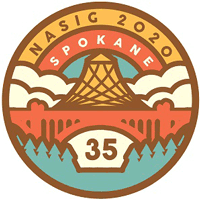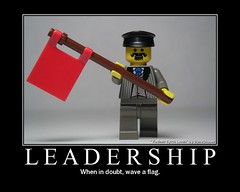Leadership is a subset of management. Focus on developing skills in communication, active listening, time management, productivity, team building, DEI, performance management, and process management/workflow analysis.
“Managers to things right. Leaders do the right things.”
Managers need to do all of their job, which includes performance management. It’s not about being nice or not. If your staff are struggling, it’s something you need to address. Understand the difference between performance problems and disciplinary issues. Don’t avoid facing issues with less competent staff by redistributing their work to competent staff.
A part of performance management is change management. It’s not just when technology or institutional change happens that you need to manage that change. Waterhouse has found Kotter’s eight step process for leading change helpful.
Understand what kind of change needs to happen, and at what level. Some things are common/comfortable to us because of the nature of our work in libraries. Some require more transformation.
Some people are more risk adverse and some are more tolerant. A common reason why people resist change is that the expertise they have built is being set aside. They will have to learn new skills and are likely to make mistakes they may have not made for a long time because of that previous expertise. If your organization has a culture of perfection or risk-avoidance, make sure folks know it’s okay to make mistakes.
When someone moves from a technical area to a management position, they don’t have to know all of the answers. They need to make sure the answer is in the room, and that’s getting the right people together with the right resources.
Leadership competencies include emotional intelligence – it’s the one thing that’s going to help you personally and professionally above all else.
If you have someone complaining about something frequently, re-focus. If it’s not in their or your circles of concern, talk it out once. Beyond that, it’s not something that we can actually do something about, so it’s not helpful to continue to complain.
Kenneth Shaw outlines nine components of emotional competence in his book The Intentional Leader. Waterhouse notes that the willingness to self-evaluate is one of the most important components.
Goleman notes that the more styles a leader has mastered, the better. This allows you to be able to switch between styles and recognize which style works best in each situation.
Social intelligence is linked to team performance. Teams work better are teams that gel socially. Try this social intelligence test.
<had to restart computer because keyboard suddenly stopped responding and I missed most of the project management component>
Conflict is a natural part of life and can be managed in a healthy way. The most emotional person should not always get their way.
The common perception of conflict is that you have either avoidance or confrontation. The ideal process of working with conflict is negotiation. Instead of one person being frustrated with coworkers and complaining to others, or bottling it up to blow up later, negotiation requires communication. Seek to understand where people are coming from. If you’re not going to listen to them, they’re not going to listen to you.
Getting buy-in is important, but sometimes you just need to take action. Understand the emotion / cognition / behavior connection, and consider working backwards from there.
How do you want to be remembered? Do you want to be the reason why improvements didn’t happen until you left, or do you want to be the one who made work life better for everyone?



